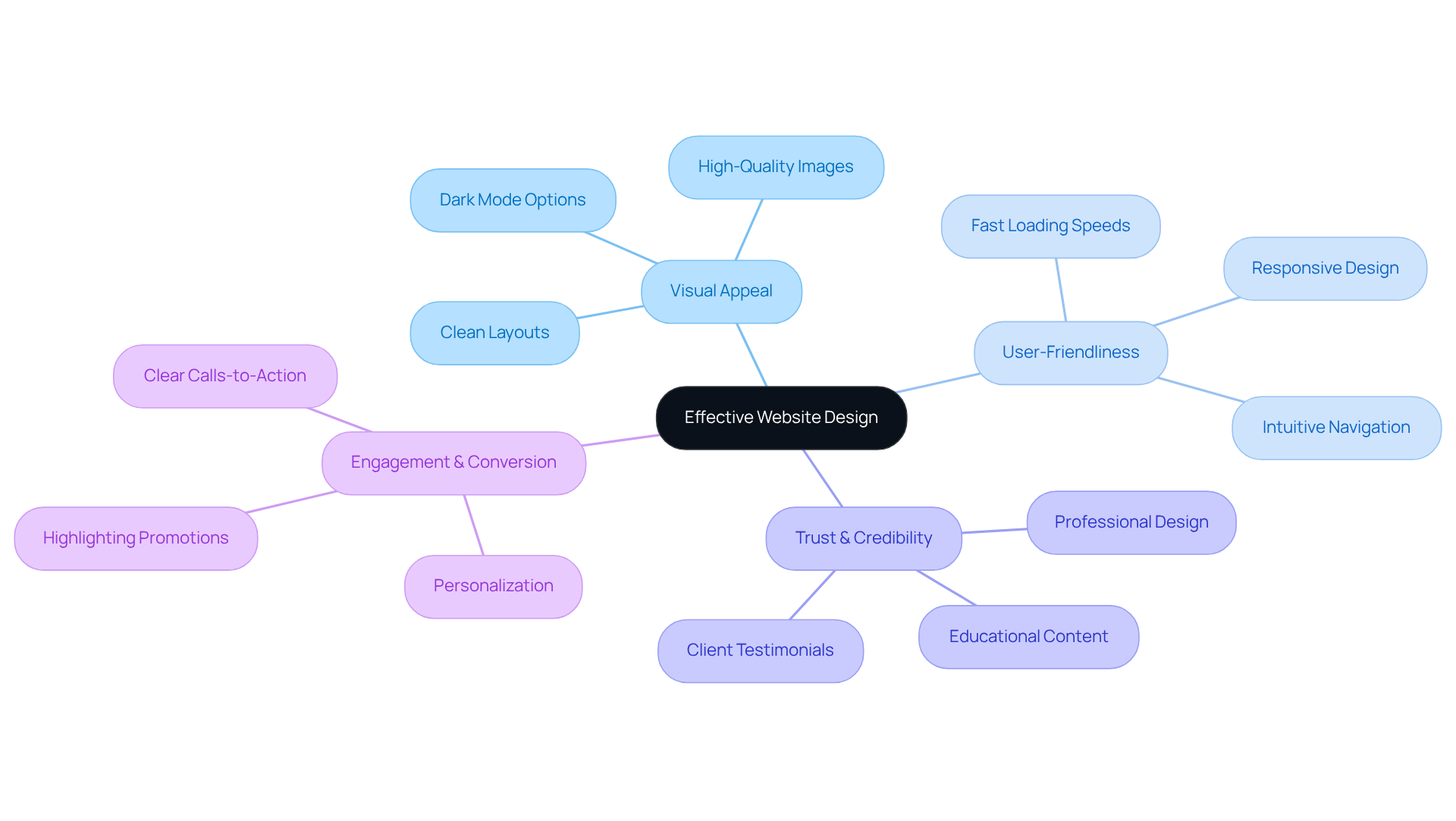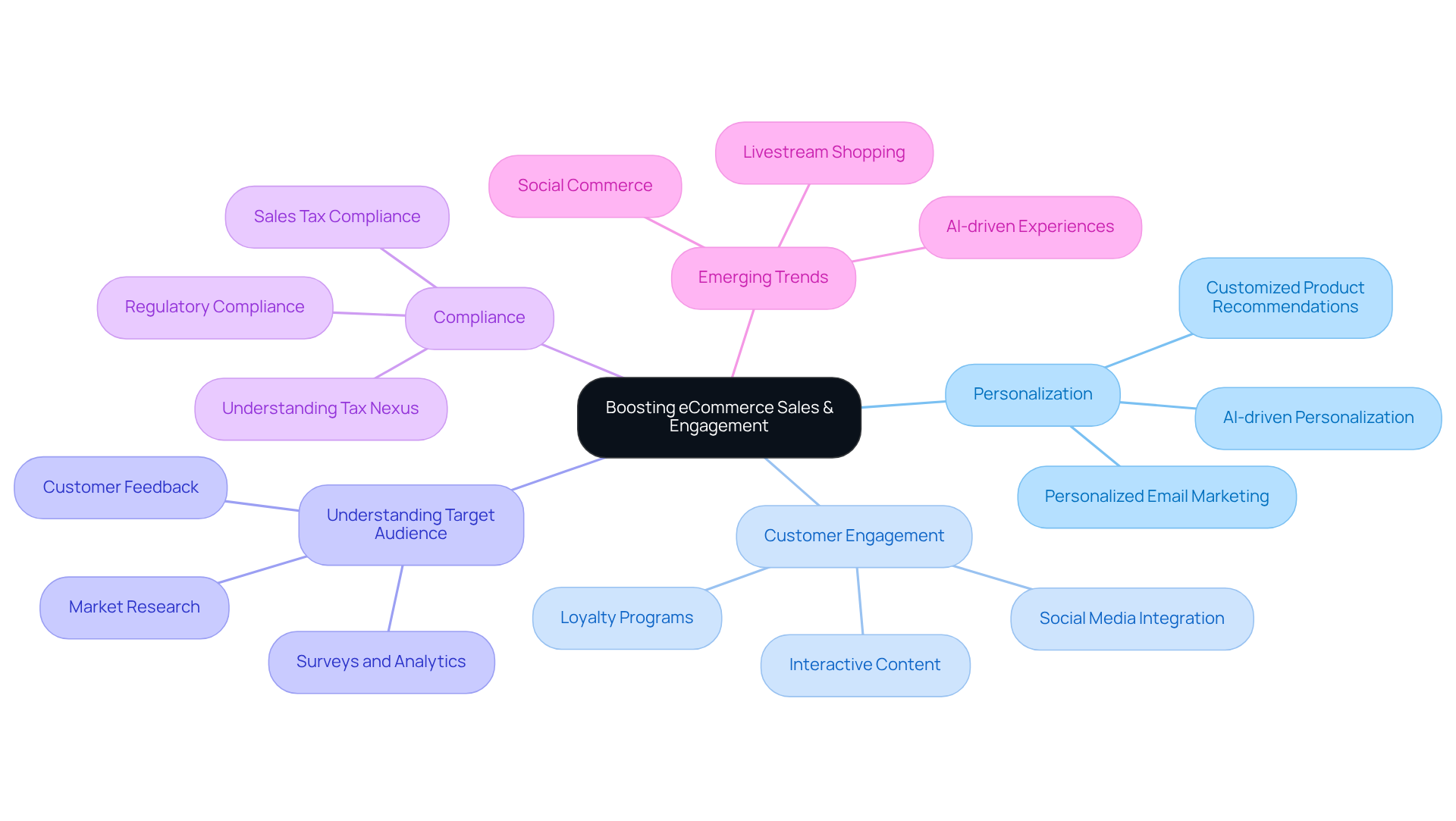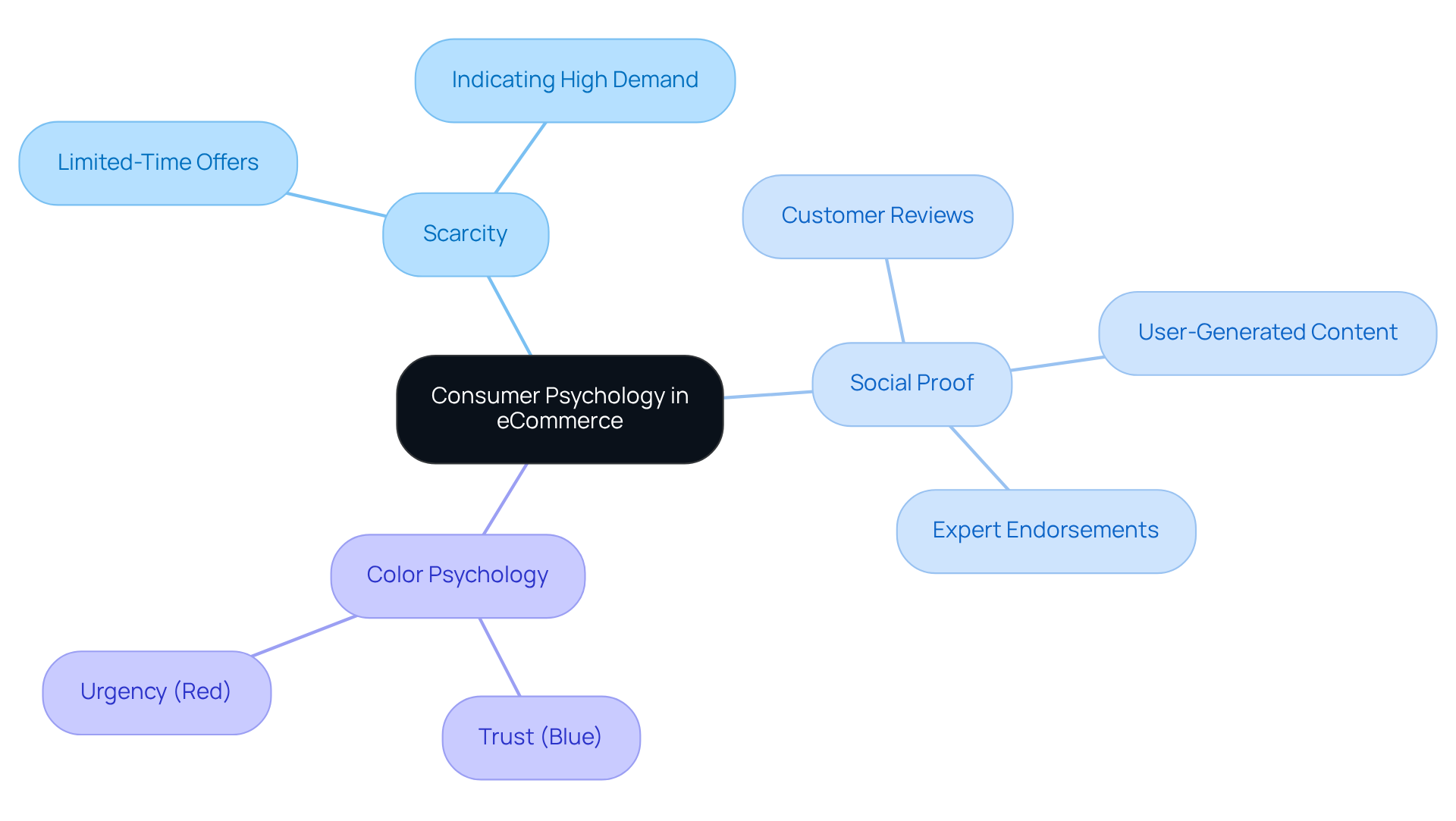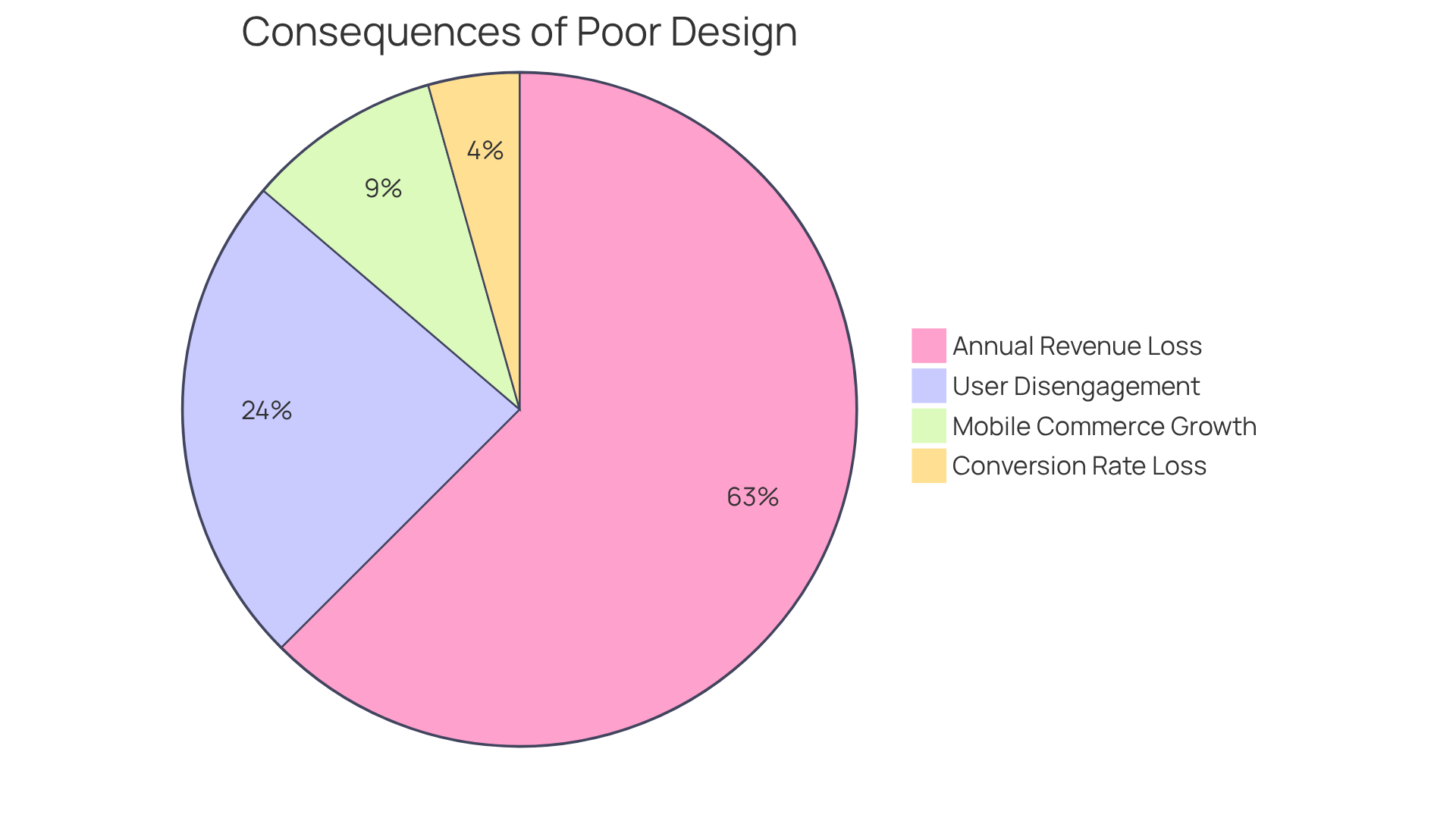
Overview
Website design and eCommerce are paramount for brand success, as they create a robust online presence and profoundly impact customer engagement and trust. Effective design elements and seamless eCommerce experiences not only draw visitors in but also significantly boost conversion rates. Statistics reveal that inadequate design can result in considerable revenue losses and tarnished brand credibility, underscoring the necessity for brands to prioritize their digital strategies.
Introduction
Effective website design and eCommerce practices are not merely optional; they are essential for brands striving for success in the digital marketplace. As consumer expectations evolve, businesses must adapt by crafting visually appealing and user-friendly online environments that resonate with their target audience. The challenge remains: how can brands leverage these elements to attract visitors and convert them into loyal customers? By exploring the intricate relationship between website design, eCommerce strategies, and consumer psychology, we uncover the keys to thriving in an increasingly competitive landscape.
Establishing a Strong Online Presence Through Effective Website Design
Effective website design and ecommerce are essential for establishing a robust online presence. As we look toward 2025, consumers expect companies to deliver website design and ecommerce that are visually appealing, user-friendly, and genuinely reflect their values and offerings. A well-designed website that focuses on website design and ecommerce not only captures attention but also establishes trust and credibility.
Companies that prioritize clean layouts, intuitive navigation, and responsive aesthetics in website design and ecommerce significantly enhance their likelihood of engaging visitors and converting them into loyal customers. Recent research indicates that 75% of users evaluate a company's trustworthiness based on its . Consequently, investing in high-quality website design and ecommerce transcends mere aesthetics; it emerges as a strategic necessity for brands aspiring to excel in the digital landscape.

Leveraging eCommerce to Boost Sales and Customer Engagement
In the rapidly evolving eCommerce landscape, leveraging effective tools and strategies is essential for driving sales and enhancing customer engagement. Brands that adopt seamless shopping experiences—such as one-click purchasing and personalized recommendations—can witness substantial increases in conversion rates.
For example, AI-driven personalization has been proven to elevate sales by as much as 20%, as customers are more likely to make a purchase when they feel understood and catered to. Engaging customers through interactive content, loyalty programs, and social media integration fosters a sense of community, encouraging repeat purchases.
Moreover, comprehending the target audience through is vital for executing effective marketing strategies. As online retail continues to expand, prioritizing these strategies, alongside compliance with regulations across all sales regions, is crucial for brands aiming to remain competitive and enhance revenue.
Additionally, emerging trends such as livestream shopping and AI-driven experiences are set to revolutionize customer interaction in online retail by 2025.

Utilizing Consumer Psychology to Optimize Website Design and eCommerce Strategies
Consumer psychology is a cornerstone in shaping effective website design and ecommerce strategies. Understanding and behaviors allows brands to craft experiences that resonate profoundly with their audience. For instance, leveraging principles such as scarcity—through limited-time offers—and social proof, exemplified by customer reviews, can significantly sway purchasing decisions.
Research shows that a striking 92% of online shoppers consult product reviews prior to making a purchase, underscoring the necessity of prominently displaying positive feedback on eCommerce platforms. Moreover, employing color psychology to evoke emotions can enhance user engagement; blue, for example, is often associated with trust, making it a preferred choice for brands aiming to establish credibility.
By integrating these psychological insights into their creation and marketing strategies, companies can optimize their approaches for maximum impact.

Consequences of Poor Website Design and eCommerce Implementation
Neglecting efficient website design and ecommerce can severely impact companies. Research shows that:
- 38% of users disengage from a website due to unattractive content or layout, resulting in high bounce rates.
- Slow loading times present a significant barrier to conversions; a mere one-second delay can lead to a 7% decrease in conversion rates.
- Online retail businesses are losing an average of five sales annually per customer due to poor website design and ecommerce, resulting in a staggering yearly loss of £1.41 billion.
- Mobile commerce is projected to surpass 50% of total eCommerce sales by 2025, and companies that neglect mobile optimization risk alienating a substantial segment of their audience.
- A smooth checkout process is critical for converting visitors into paying customers, as lengthy checkouts significantly increase cart abandonment rates.
The repercussions of not only impede growth but also damage brand reputation and lead to significant revenue losses.

Conclusion
Establishing a compelling online presence through effective website design and e-commerce is vital for brand success in the digital age. As consumers increasingly seek visually appealing and user-friendly experiences, companies must recognize that a well-crafted website is more than just an aesthetic asset; it is a strategic imperative that builds trust and drives engagement.
The article highlights several key arguments, including:
- The importance of intuitive navigation
- The benefits of seamless e-commerce experiences
- The role of consumer psychology in shaping user interactions
Brands that prioritize these elements are better positioned to enhance customer loyalty and conversion rates. Furthermore, neglecting website design can lead to significant losses, emphasizing the need for businesses to adopt a proactive approach in optimizing their online platforms.
In a rapidly evolving digital landscape, the significance of effective website design and e-commerce cannot be overstated. Brands are encouraged to leverage these insights, embrace emerging trends, and invest in strategies that resonate with their target audience. By doing so, they not only enhance their market presence but also secure a competitive edge in an increasingly crowded marketplace.
Frequently Asked Questions
Why is effective website design important for establishing an online presence?
Effective website design is essential for creating a robust online presence as it ensures that websites are visually appealing, user-friendly, and reflective of a company's values and offerings.
What do consumers expect from website design and ecommerce by 2025?
By 2025, consumers expect website design and ecommerce to be visually appealing, user-friendly, and genuinely reflective of the company's values and offerings.
How does website design impact a company's trustworthiness?
Research indicates that 75% of users evaluate a company's trustworthiness based on its website appearance, making website design a critical factor in establishing credibility.
What elements should companies prioritize in their website design?
Companies should prioritize clean layouts, intuitive navigation, and responsive aesthetics to enhance visitor engagement and conversion into loyal customers.
Is investing in website design merely an aesthetic choice?
No, investing in high-quality website design transcends aesthetics and is considered a strategic necessity for brands aiming to excel in the digital landscape.
FAQs











